The First Italian Technology Manuscript
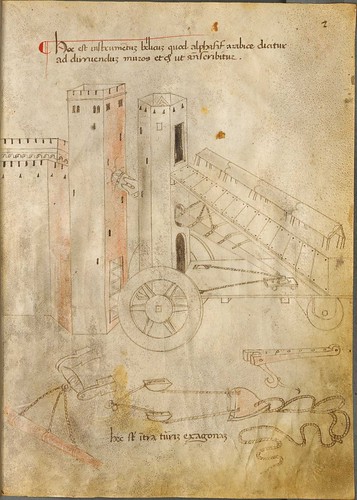

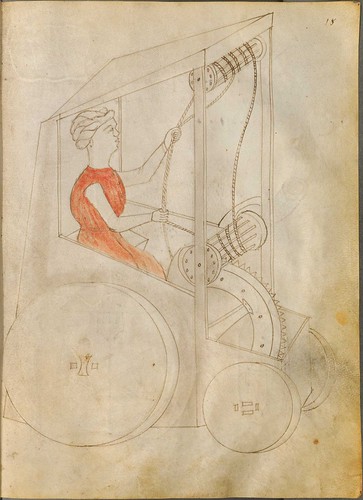
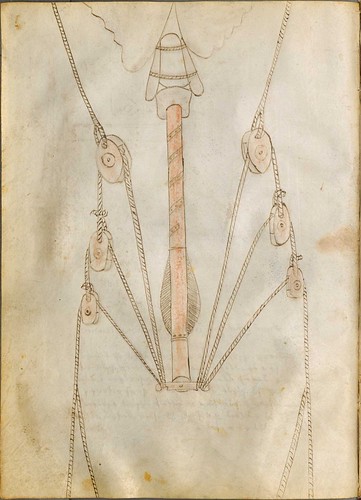


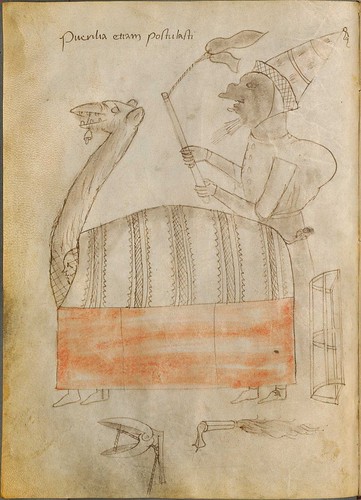
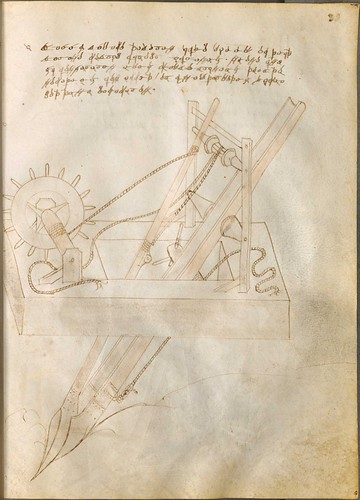

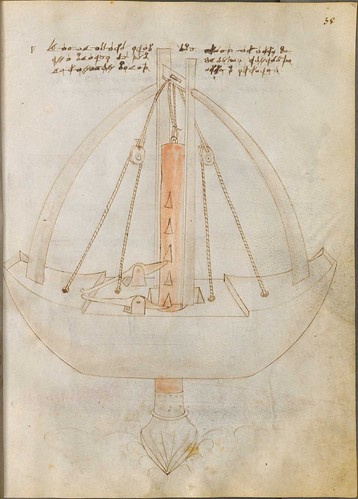
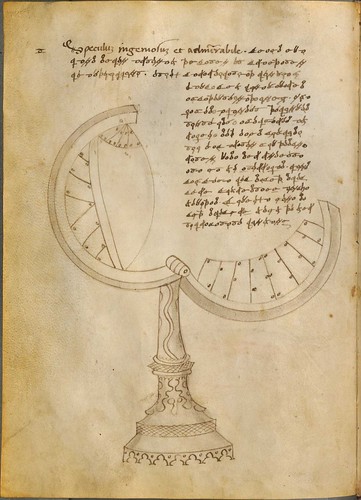
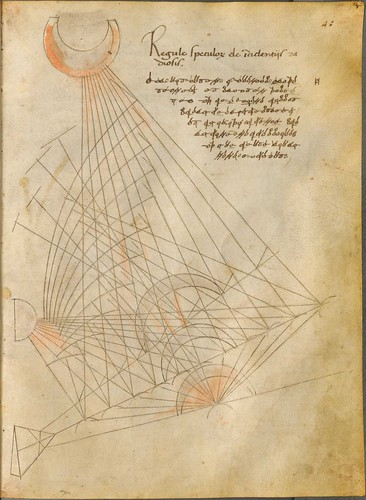
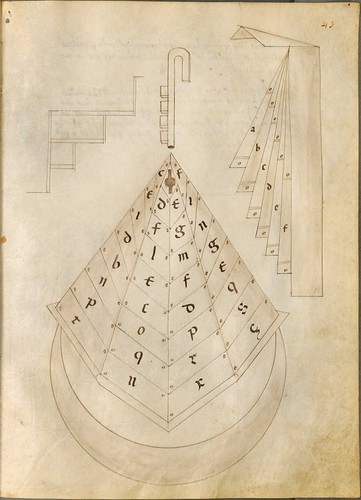


[prefiguring Khan? - the body as machine(s)]
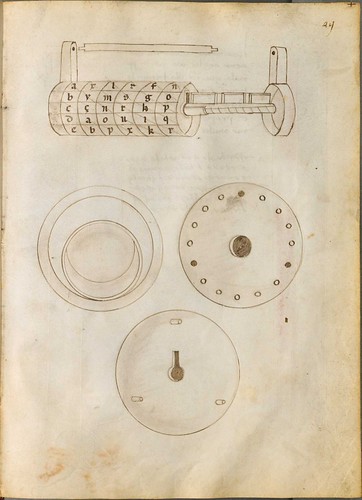

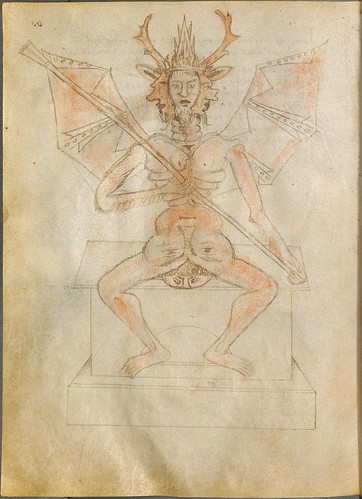
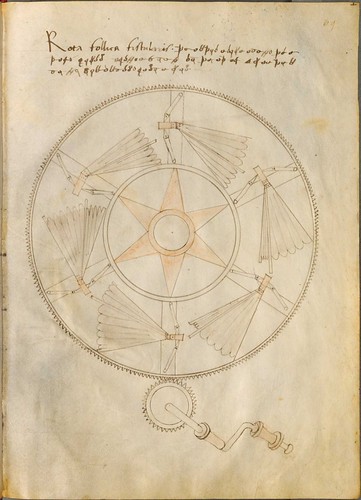
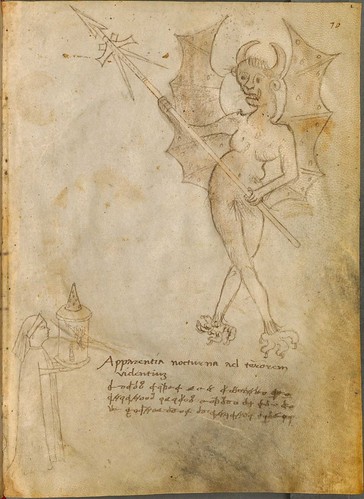
A generation before the extraordinary machine drawings of Leonardo da Vinci, the first technology manuscript of the Italian Renaissance was produced by a Venetian scholar who had familiarised himself with the handful of books on the mechanical arts from the Greek and Arabic traditions.
Giovanni da Fontana (?1395-1455) obtained degrees in arts and medicine in Padua and was appointed physician to the Venetian army in Brescia. He had a wide range of interests and studied historical works on optics, astrology/alchemy (intrinsic medical studies back then), pneumatic and hydraulic mechanics, military machines and the art of memory.
The full title of Fontana's treatise from c. 1420, seen above, is: 'Bellicorum instrumentorum liber, cum figuris et fictitys litoris conscriptus' (~Illustrated and encrypted book of war instruments).
The title is a little misleading or at least fails to take into account the wide range of technologies included in the 70 folio pages (with about 140 illustrations). Fontana's unsophisticated concept drawings show siege engines, fountains and pumps, lifting and transporting machines, defensive towers, dredges, combination locks, battering rams, ?'rocket'-powered craft, the first ever depiction of the magic lantern (last picture above), scaling ladders, alchemical furnaces, clockwork/robotic automata and measuring instruments, among others.
Each picture is accompanied by a few lines to a couple of paragraphs of text. The first sentence is usually in Latin with the remainder written in a substitute cypher system [see here]. There are probably various reasons that account for why the text was (simplistically) encoded, although secrecy is unlikely to have been the main priority. There was something of the showman (and magician) in Fontana, who is thought to have built toy models of a few of the automata, so projecting a veil of esoteric mysticism will have appealed to his desire to amaze readers. Coded writing may also have offered a form of copyright, providing one level of difficulty for any unauthorised copying. As Fontana's only other extant manuscript -('Secretum de thesauro experimentorum ymaginationis hominum' : devoted to mnemonic devices, memory and natural philosophy experiments)- was also drafted in the same code, it is speculated that the author considered the code a symbolic writing system that conferred particular significance on the contents.
And from our point of view the significance of Fontana's book lies in its timing. At ~600 years old, it brought together a range of known technologies -- drawn from Philo of Byzantium* to Al-Jazari*, for eg. -- augmented with Fontana's own, sometimes fanciful, designs and presented them in an accessible format (comparatively speaking) as a kind of prototype of a technical manual.
"To be sure, there are treatises on technical matters from before this date [1400], but if one surveys the earlier writings in a general way, one cannot help but be impressed by the very small number of such works, by the way they are so widely separated in time and space, and by the fact that their authors were seldom practicing craftsmen. [..]
"The appearance of the illustrated treatise and its printed descendant fostered contacts between the technician's work and the world of high culture, since the treatises were apparently read not only by craftsmen, but by aristocrats, lawyers, and intellectuals as well. The presentation of technological matters before such an audience helped heighten the technician's sense of self-consciousness and make him more willing to justify his activities in ways acceptable to Renaissance high culture." [source]
- The only remaining copy of 'Bellicorum Instrumentorum Liber' [BSB cod. icon. 242] is owned and hosted by the State Library of Bavaria in Munich.
- Linked here many times previously, Bert Hall's essay from 1976 remains a must-read if you have any interest in following the history of technology over the 200 year period from 1400.
- A facsimile edition of 'Bellicorum Instrumentorum Liber' was published in 1984 as part of (what appears to be) the definitive study of Fontana by E & GS Battisti : 'Le Macchine Cifrate di Giovanni Fontana' (in Italian and out of print).
- 'Medieval Technology and Social Change' by L White Jr, 1966.
- 'Openness, Secrecy, Authorship: Technical Arts and the Culture of Knowledge from Antiquity to the Renaissance' by PO Long, 2001.
- 'Renaissance Vision from Spectacles to Telescopes (Memoirs of the American Philosophical Society)' by V Ilardi, 2007. [And: other books at Amazon mentioning Fontana]
- 'The Life and Works of Giovanni Fontana' by M Clagett, IN: Annali dell'Istituto e Museo di Storia della Scienza di Firenze, i (1976), 5–28 (behind paywalls).
- Variously: one, two, three, four (in other words, there's not a great deal online that directly addresses Fontana; hence all the book links).
- Previously - machines, with a host of entries on the history of technology ( but particularly: Engineering the Renaissance).

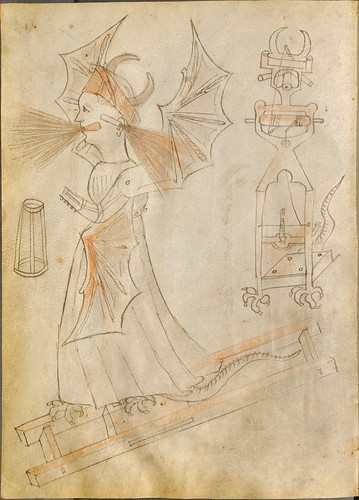



No comments:
Post a Comment